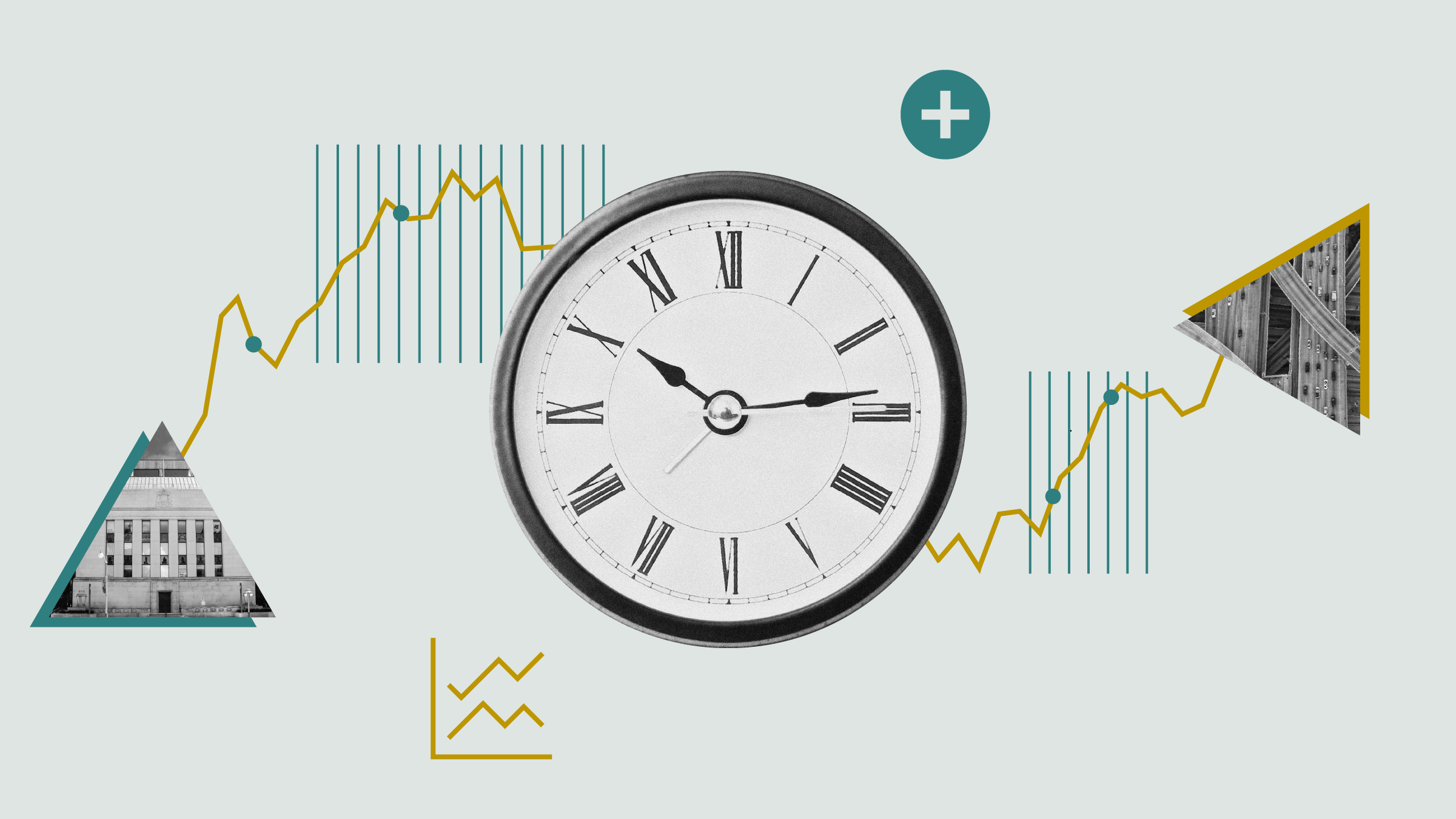
The markets have had a volatile start to the year, which has spooked investors. Canadians, especially those who carry debt, are keeping a wary eye on the Bank of Canada’s inevitable rate hike. And National Bank is raising the alarm about how much we’re spending.
In a report titled ‘Canada Can’t Afford to Bleed Capital Like This’, author, Stefane Marion, who is the chief economist and strategist at National Bank says the near future holds many challenges for countries, that, in a post-pandemic regime, must rebuild their resilience and address investor concerns about the energy transition as well as environmental, social and governance considerations (ESG). This will require a significant effort to replace existing capital stock in OECD economies at a time when many governments are already highly indebted. The ability to retain and attract capital will therefore be critical to avoid an abrupt transition to this new regime.
“Unfortunately, growth-enhancing investment is lagging in Canada, Marion states flatly, a trend that was evident even before the pandemic.”
“An inadequate level of capital investment is not a new thing, points out Anil Passi, Managing director, Global corporates, at DBRS Morningstar. All economists would agree that we need more capital investment. Of course, that’s what enhances your future prosperity.”
Manufacturing Investment Low
The report highlights a few concerns. First: capital stock in manufacturing is at a 35-year low. After reaching a high point in 2000, it has constantly declined since by about 20%. In that interval, our closest neighbour and competitor, the United States, has steadily inched up by 19%. With 1961 representing a value of 100, the U.S. index of capital stock now stands at 450, Canada’s at 250, a whopping 200-point spread between both countries.
What is particularly disturbing is that, from 1961 to 1990, manufacturing capital in Canada and the U.S. evolved in very close proximity. By 1990, both sectors irretrievably parted ways: it continued its growth path in the US and, in Canada, after hitting a very temporary climax in 2000, it just kept on retrenching to today’s low.
“For the last 20 plus years, manufacturing capital has gone to Asia, Passi recalls, and now, on top of that, no one wants to invest in dirty energy.” And offshoring seems to have been even more acute in Canada than in the US, though “offshoring” and “reshoring” have certainly not been major discussion points in Canada as they have been in the U.S.
Low Private Capital Stock
The second concern is that private capital stock growth, which accounts for 75% of fixed non-residential capital stock, is at an all-time low, after showing a nearly constant decline since 1966. It hit a low of 0.2% growth in 1993, then shot up to highs of 4.6% and 4.1% in 2006 and 2014. Now, after hitting another low of 0.2% in 2016 and crawling its way up to 1% in 2019, it has sunk into negative territory in 2020 at -0.4. “While the pandemic most certainly exacerbated this decline, recognizes Marion, we note that the 5-year moving average has been on a downward trend for several years. In fact, that downward trend has been happening since 1965, presently reaching its lowest point.
Canada’s current account, which has been deeply negative since 2009 and showed a minuscule positive blip in 2020, stands to plunge back into deficit in the coming years. And Canada is very dependent of foreign money to finance its current account, notes Marion, who warns: “If our growth prospects look unattractive in a post-pandemic world, capital flight could ensue.” This is the kind of warning that international financial institutions are wont to throw at third-world countries.
Topsy-Turvy Residential Capital
Third alarm button: the volume of residential capital stock now exceeds non-residential capital stock for the first time since 1961, when the data was first recorded. Both stand at about $2.3 trillion, the number of residential capital stock now overtaking the non residential one.
“Residential real estate has received a lot of capital, but it’s not a productive asset,” says Passi. “Will that cut into our future prosperity, he continues? Maybe. It would be better if housing could be more steady; money could go to higher value added ventures in technology, health care, services, etc.”
Exodus of Pension Money
Canadian pension funds, whose asset base is now as large as Canada’s GDP, are fleeing domestic stocks, their holdings of domestic stocks having plummeted from a high of 77% in 2000 to a trough of 27% at the end of 2020 (however, their holdings still favour Canadian bonds, with allocation standing at 86%). The fall has been particularly steep in the past year: purchases of foreign equities has surged to $130 billion, equivalent to 5.2% of GDP.
While Canadian purchases of foreign equities have somewhat paralleled foreign purchases of Canadian equities, the sudden surge of Canadian purchases of foreign equities dwarfs foreigners’ purchases of Canadian equities. For the first time ever in Q1 of 2021, total market value of foreign assets by Canadian pension funds exceeded that of Canadian assets.
“This is justified under the guise of so-called ESG considerations, states the report. But who exactly are the net beneficiaries of Canadian capital? U.S. companies, primarily in the information technology sector that benefit from index-based investing. While some of these firms may pass the “E” test in ESG, we would argue that many of them have a questionable track record when it comes to passing the “S” and “G” test in ESG. The same is true for some emerging markets that also receive Canadian capital.”
Canada Isn’t an Attractive Destination Right Now
“Capital flows to where it will get the best return,” says Passi, highlighting a classic economic law. Canada doesn’t seem to offer that destination, at least not right now. Passi considers that Canada should certainly not try to compete with the low-value manufacturing economies of the world. It should aim for the high-value levels: pharmaceuticals instead of vacuum cleaners and software instead of fridges. “Canada would certainly desire this shift, adds Passi, but is it doing enough to make it happen?”.
Such questions imply “long term thinking and vision,” Passi says, things that concern productivity increase, human capital improvement, lower taxes on developing industries, infrastructure investment. But the report “seems to point to a lack of such vision, he adds. Yes, we want more capital. But can we do what it takes to attract it and guide it to the right areas?”
There is probably a silver lining to the situation the NBC report denounces: “Currently, the earnings yield of S&P/TSX constituents is 40% higher than that of S&P 500 companies (6.5% versus 4.6%. (...) Despite being one of the best performing equity markets in 2021, the S&P/TSX is therefore trading at a record discount to the S&P 500.” That calls up the following question for investors: do the long-term prospects of Canada’s economy encourage investing in them?



















